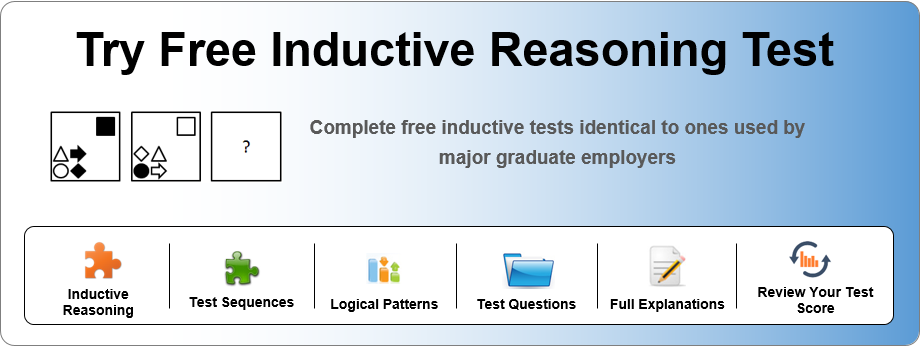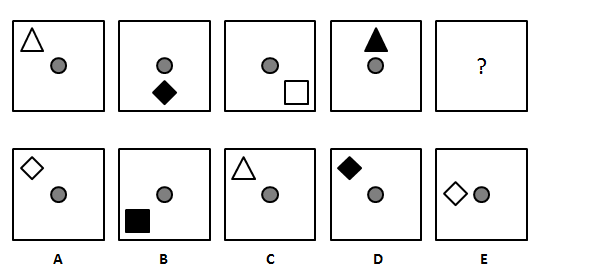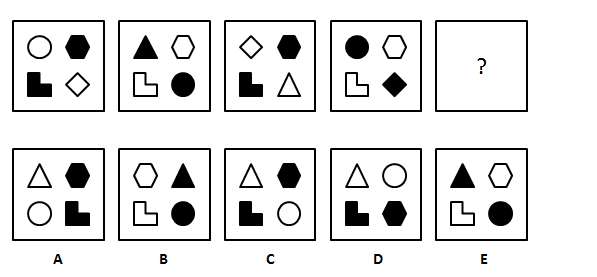Inductive Sequence Patterns for Intermediates
If you have taken inductive reasoning test in the past you may already know what to expect. However, for those who just start out such tests can be daunting experience especially if you haven’t done much practice. Selection items provided by leading psychometric publishers such as SHL, Kenexa or other major providers may be complicated to prepare for, with many factors determining success of your performance. As a result there are numerous things to learn to be able to do well on such task. Especially, beginners are often frustrated and end up doing nothing. They may know the importance of preparation and have the desire to improve however they are not sure as where to start. This short tutorial attempts to provide you with good starting point and give you ideas about few tactics to improve your performance in such selection exercises.
 |
One of the major building blocks of inductive reasoning test questions are patterns that consist from shapes that are transformed to different types of items. To solve such problems you will have to think logically and systematically. To demonstrate this consider the below tiles.
 |
If you glance at the row of boxes you can easily spot that the grey circle remains in the centre throughout the sequence. If you further inspect the pattern you will see that there are three objects around the middle square arranged in seemingly irregular way. So how do you find out what tile comes next? The answer to this is actually quite simple. Notice that the above inductive aptitude series is based on fundamental principle of shape transformations where white triangle always changes to black chevron which changes to white square and white square changes back to triangle.
So, knowing this you can deduce that the next tile in the sequence must contain a white chevron. Therefore you can rule out options B, C and D and focus your efforts on tiles A and E. Next, you need to decide where the chevron should be positioned; will it be at the top or in the middle of the box? Again you can see that the items under consideration alternate between moving three and then one step each time clockwise hence you can conclude that the symbol must appear in the top left corner and in this case A would be the correct answer.
Remember, when completing or practicing for inductive reasoning test you must analyse the problem or question systematically, eliminate the least likely answers and shift your efforts only on remaining options. To demonstrate similar rule of shape conversions consider the tiles in the below sequence. Alternatively to view related examples see common inductive aptitude patterns that will present you with number of different rules and show you how go about answering and making connections of such abstract images in wide range of situations.
 |
Notice, shapes in the top left and bottom right corners change to different ones, that is, the circle transforms to a triangle, the triangle changes to chevron and the chevron changes back to a circle in each step of their iteration. Note that the symbols in the top right and bottom left corners remain unchanged and only alternate between black and white in each box. Based on the above observations you can rule out answer choices A, B, D and E and conclude that C must be the correct answer.

